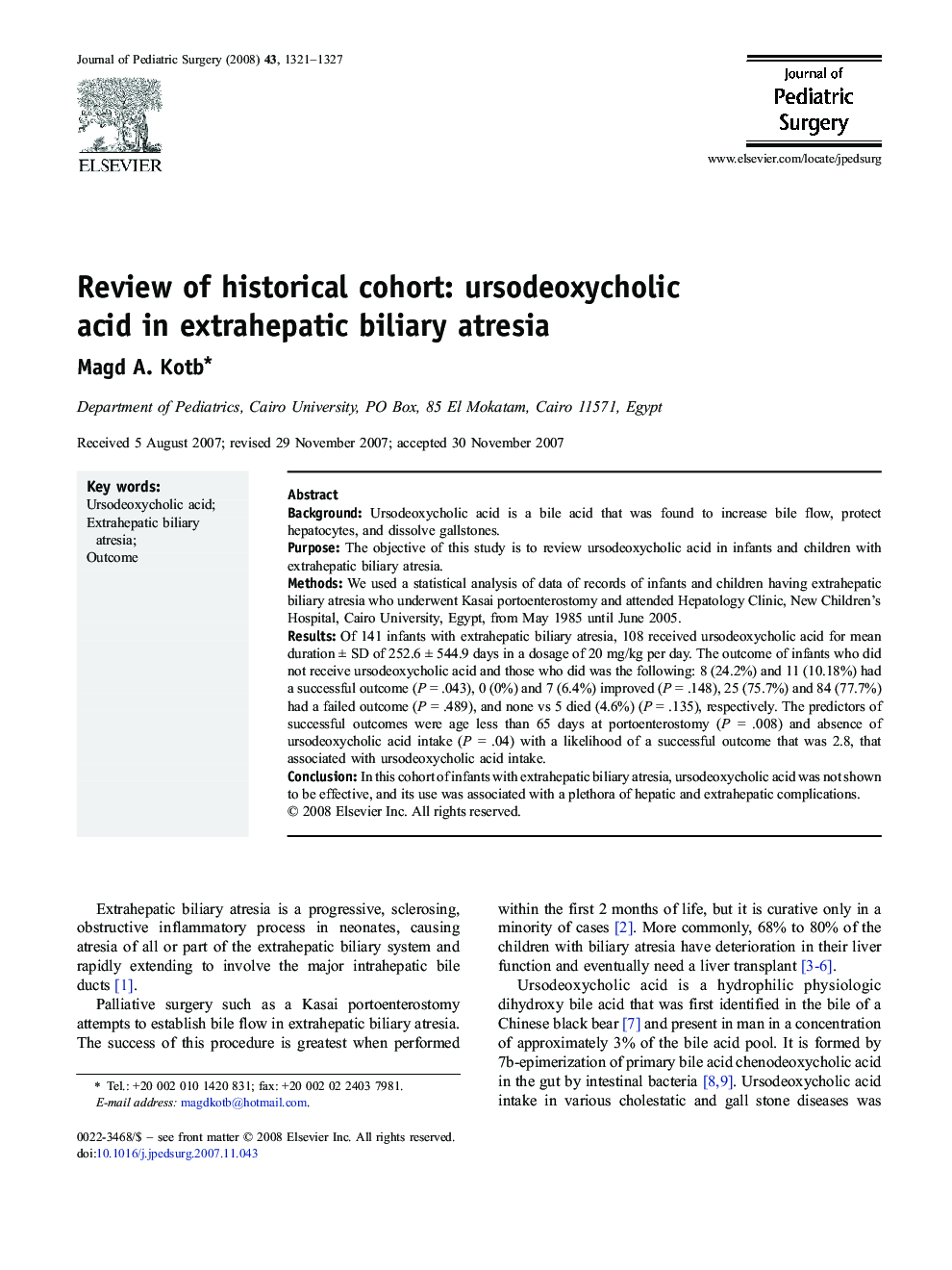| Article ID | Journal | Published Year | Pages | File Type |
|---|---|---|---|---|
| 4158879 | Journal of Pediatric Surgery | 2008 | 7 Pages |
BackgroundUrsodeoxycholic acid is a bile acid that was found to increase bile flow, protect hepatocytes, and dissolve gallstones.PurposeThe objective of this study is to review ursodeoxycholic acid in infants and children with extrahepatic biliary atresia.MethodsWe used a statistical analysis of data of records of infants and children having extrahepatic biliary atresia who underwent Kasai portoenterostomy and attended Hepatology Clinic, New Children's Hospital, Cairo University, Egypt, from May 1985 until June 2005.ResultsOf 141 infants with extrahepatic biliary atresia, 108 received ursodeoxycholic acid for mean duration ± SD of 252.6 ± 544.9 days in a dosage of 20 mg/kg per day. The outcome of infants who did not receive ursodeoxycholic acid and those who did was the following: 8 (24.2%) and 11 (10.18%) had a successful outcome (P = .043), 0 (0%) and 7 (6.4%) improved (P = .148), 25 (75.7%) and 84 (77.7%) had a failed outcome (P = .489), and none vs 5 died (4.6%) (P = .135), respectively. The predictors of successful outcomes were age less than 65 days at portoenterostomy (P = .008) and absence of ursodeoxycholic acid intake (P = .04) with a likelihood of a successful outcome that was 2.8, that associated with ursodeoxycholic acid intake.ConclusionIn this cohort of infants with extrahepatic biliary atresia, ursodeoxycholic acid was not shown to be effective, and its use was associated with a plethora of hepatic and extrahepatic complications.
